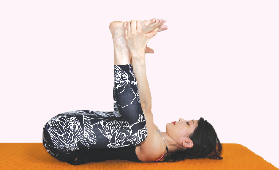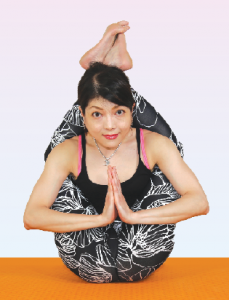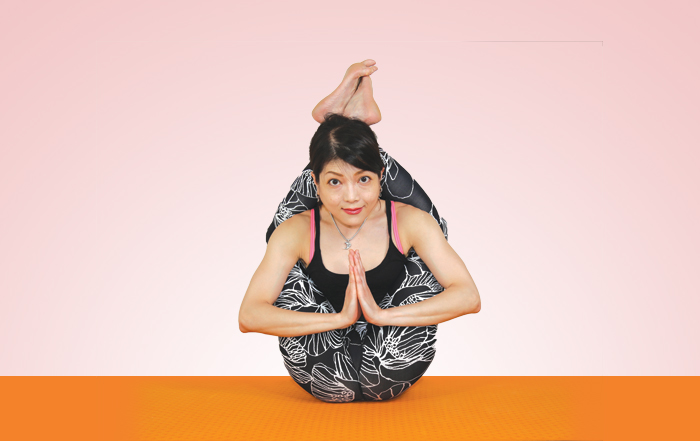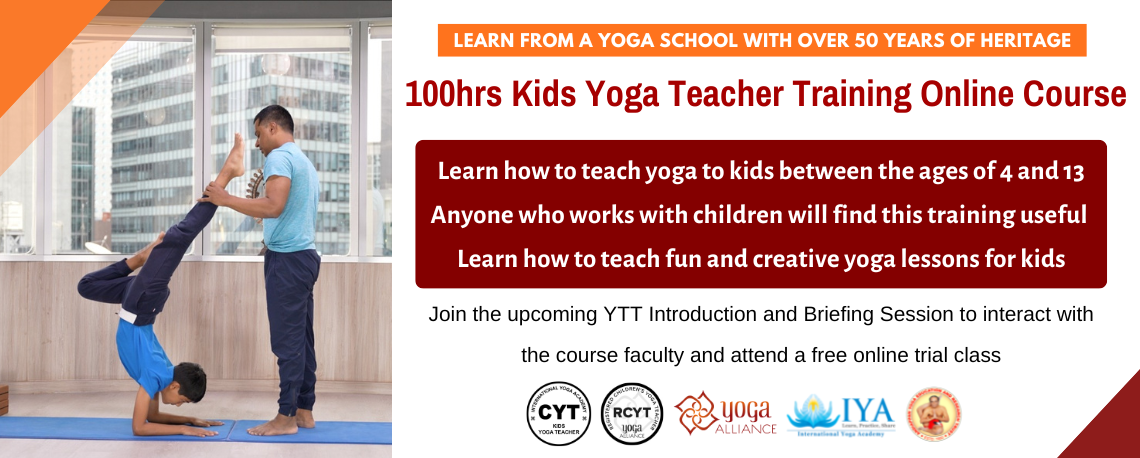To break down the Sanskrit name, Dwi means two, pada means leg and sirsa means head.
Dwi Pada Sirsasana is similar to Yoga Nidrasana / Yogic Sleeping pose and is also seen an advanced version or Koormasana / Tortoise pose. Like a tortoise withdrawing its head to its shell, coming into Dwi Pada Sirsasana encourages the practitioner to draw the attention inwards and focus on the body as a whole. The body parts are well connected and close to each other, therefore it is easy to visualize the breath moving towards all parts of the body.
Contrary to its somewhat extreme appearance, Dwi Pada Sirsasana is considered one of the deeper spiritual poses where calmness and awareness can be achieved.
Dwi Pada Sirsasana is a deep external hip rotation pose and caution is advised to all levels of practitioners when trying this pose.
Asana Overview
Chakra Awareness
Anahata Chakra / Heart Centre
Practice Level
Advanced
Degree of Difficulty (100 being most difficult)
85
Movement
Lateral Rotation of the hip
Commonly called external hip rotation; A hip movement away from the centre of the body, i.e. turning the thigh or pelvis outward.
Forward Bending
A spinal movement done with the flexion of the spine.
Hip Flexion
A movement of the hip joint muscles done by bringing the thigh or top of the pelvis forward (e.g. thigh moving closer to the abdomen).
Challenges Faced During The Practice
Limited hip flexibility, which hinders the leg movement behind the head.
Body balance to keep the body upright
Chances of Injury
Injury to the hip, lower back, knee or neck
Contraindications
Existing hip, lower back, knee or neck issues
Practitioners suffering from sciatica
Sciatica is a pain in one side of the buttocks or in one leg that originates from the lower back and moves down to the sciatic nerve. Sciatica can be caused by different conditions related to the spine.
Major Muscled Involved
Lateral rotator group
A group of small muscles located in the hip area that is responsible for externally rotating the femur / thigh bone.
Sartorius
The longest muscle in the body, the Sartorius is located in the inner thigh and assists in the external rotation of the hip.
Gluteus
Being one of the strongest muscles of the body, the Gluteus assists in extending the hip and the trunk.
Erector Spinae
A muscle group found in the back which extends the vertebral column in forward and backward bending. This muscle is responsible for returning the vertebral column to the erect position after motion.
Best Time to Practice
Afternoon or evening, when the body’s natural flexibility is present.
Warm-up
The below warm-up poses focus on hip opening. It simproves the flexibility of the hip joints and prepare the body for Dwi Pada Sirsasana, a deep hip rotation pose.
Happy Baby Pose
 1. Lie on the back and bring the thighs to the abdomen and bend the knees., the bottom of the feet facing up.
1. Lie on the back and bring the thighs to the abdomen and bend the knees., the bottom of the feet facing up.
2. Hold the feet by grabbing the outer side of the feet; hands are straight.
3. Inhale and on exhale, press the hands down, aiming to bend the elbows sideway and thighs moving in line with the torso.
4. Go in and out of the pose for a few times and hold the final pose longer while maintaining normal breathing.
Final Pose

Locking the left arm to the left leg, slide the torso inside the legs and bring the hands to Anjali mudra / prayer position.
….more
To read the full article please download our Asana Journal App or purchase Issue 150 June 2015.




















 Other
Other